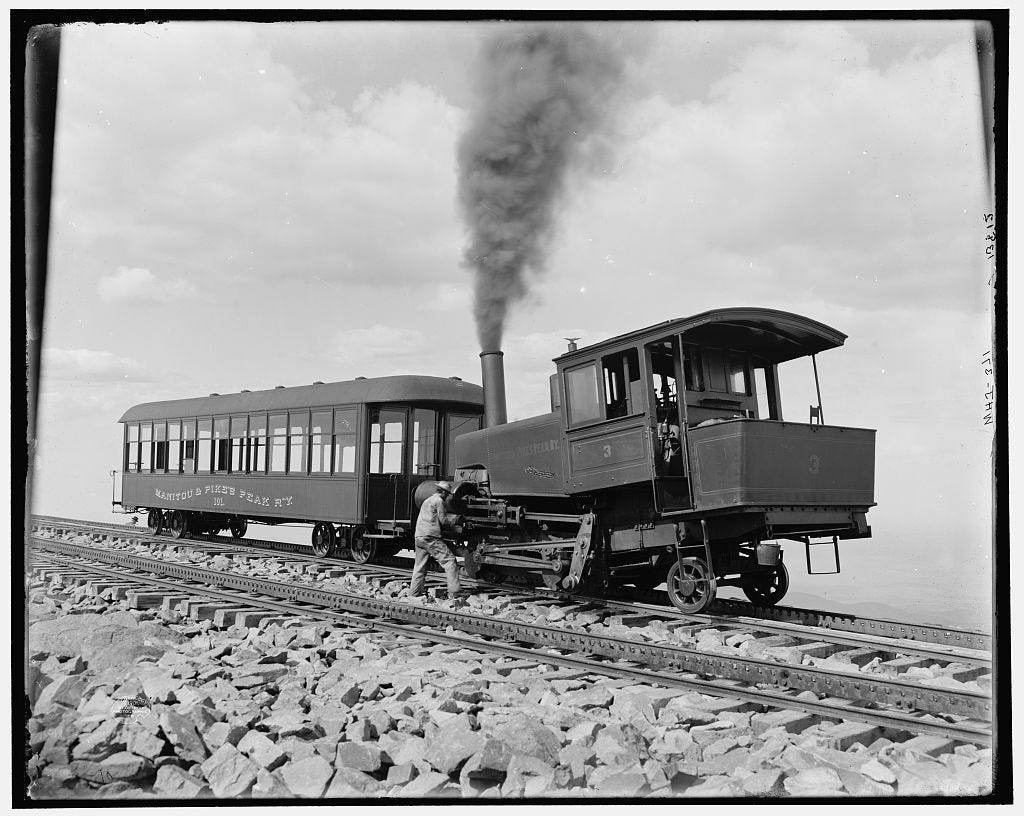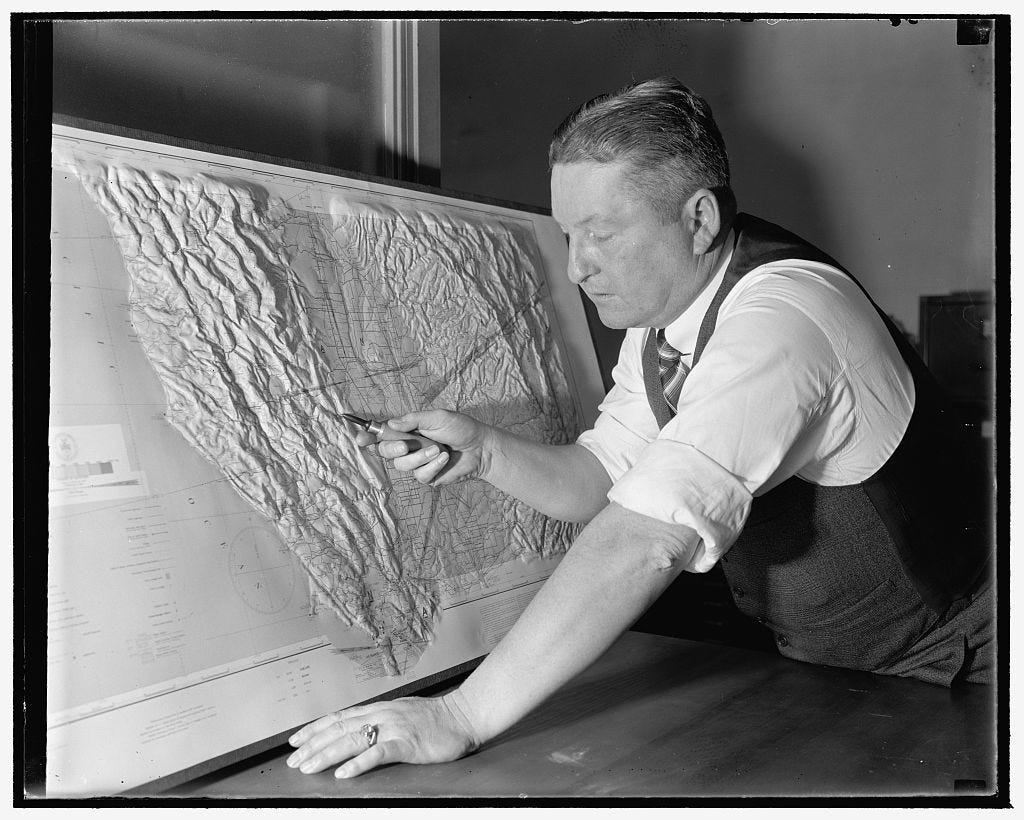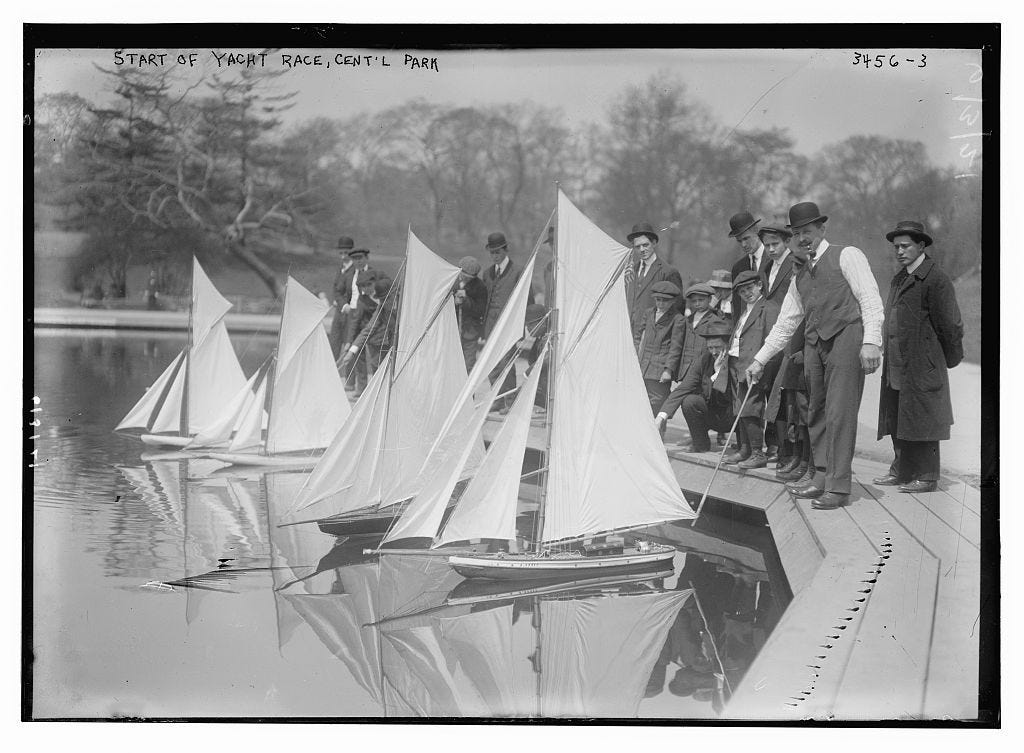The Gold Ring Scam
In this newsletter: A swindle, news on the fall Covid-19 boosters, and some words of advice.
Part I: Pulling a Scam Seems Like a Lot of Trouble, Actually
I was walking around the neighborhood one day last fall when a man with shoulder holster vibes leaned out of a black SUV and asked if I was Armenian.
There were three other men in the SUV with him, two in the back and one at the wheel. They gave off the general aura of being on their way to visit to someone who wasn’t going to be happy to see them.
I told the man that I wasn’t Armenian. He seemed not to believe me, and asked where I was from. I considered giving him the whole long pedigree: Various forgotten places in any number of Cossack-ridden oblasts; a city called Munkács, which was in Hungary but is now in Ukraine; a village called Krasnostav, which was in Russia but is now, also, in Ukraine; and also Spain, though that was a while ago.
I figured that he didn’t really want to hear it, though, so I just said that I was Jewish, which should have been obvious. That disappointed him, but he still stuck a chunky, golden-looking ring out of the window and said something about needing gas money. I shook my head and walked on down the block.
What I haven’t been able to figure out, in the months since this encounter, is why it was worth the while for these four serious-looking dudes to be driving around uptown Manhattan, looking for Armenians.
The scam that I’m relatively sure they were trying to pull is a common one; you can find recent reports of it from Seattle, Tennessee, Prague, Paris, British Columbia, Idaho, Toronto, California, and Virginia, among other places. Let’s call in the golden ring swindle, for ease of reference, though it doesn’t necessarily need to involve a ring. The general idea is as follows:
They pull up well dressed, in a nice car, and say they need cash for gas. They lost their wallet, or maybe their credit card isn’t working.
They’re not asking for charity, though. Instead, how about a good deal on this golden ring they happen to have with them?
They could take it to the jeweler themselves, of course, but they’re on their way out of town and they’re in a tremendous hurry (their aunt has shingles, their wife’s sister has a toothache, their son has a nosebleed, etc.), so maybe you and they can come to an agreement?
So you buy the ring, they take off, and you head over to the pawn shop.
And of course the guy at the pawn shop tells you the golden ring is actually bronze, or copper, and worthless.
That all makes sense. What I can’t understand is how these four shoulder holster-types made the whole thing pay.
In this sense it’s like lots of confidence games, which often seem like more trouble than they’re possibly worth. Take one of the cons described by a New York City Police Department Chief of Detectives named Thomas F. Byrnes in his 1886 book “Professional Criminals of America,” in which a gang rents an apartment, dresses it up like an office, and waylays a rich-looking stranger. One member of the gang pretends to recognize the stranger; when he says no, he’s not Mr. A from Austin, but rather Mr. B from Boise, the con man apologizes and walks away. Once around the corner, he pulls from his pocket a publication known as a banknote reporter, which listed the name of every bank president and director from every city and town across U.S., and looks up the name of the president and directors of the Boise bank. He sends a confederate to accost the rich stranger again, this time pretending to be the nephew of the Boise bank president, and chats him up about the doings of all the Boise bank directors and their wives and kids. The mark, flattered by the attention of this friendly stranger who seems on such intimate terms with all his own friends back in Boise, is eventually convinced to come back to the office, where he is induced to play a rigged game known as banco (a different game than the dice game bunco, though perhaps not unrelated), the specifics of which are unclear to me, but which Byrne assures us was a polished means of separating a man from his money. (By way of example, Byrnes writes that a conman named Hungry Joe scammed “thousands of dollars” from Oscar Wilde with a banco game.)
I’m sure that Hungry Joe was a clear-headed businessman, but still: Imagine the expense and trouble of renting a room and setting up a fake office that you need to tear down as soon as the mark walks out the door, in case he comes back with the cops? (Yes, I’m not sure why the banco game had to be played in an office, either, but that’s what Byrnes says, and he was the Chief of Detectives and I was not, so we have to go with him on this.) How could it possibly pay? What if Mr. B from Boise only lost a couple of bucks and then begged off? You’d still need to tear down the fake office, and then what? You go rent another place, lug your office furniture over, and start again?
Or take another scam, similar in scope, uncovered by New York police detectives in the summer of 1904: An advertisement in a local German-language newspaper that offered investors a chance to immediately triple their capital. Suspicious, a plainclothes investigator answered the ad, and found a man who said he could tap the Western Union telegraph lines to get horse racing results ten minutes before they arrived at the city’s illegal gambling parlors.
To build his story, the man took the investigator to an office elaborately decked out with telephones and two telegraph machines, where he said the Western Union lines were tapped. Then he took the investigator to a particular gambling parlor where he said could make bets using the stolen race results.
Both the office and the gambling parlor were fakes; the office workers and the bettors all shills. The details of how the scam was supposed to work are, like the details of the banco game, a little obscure, but what’s remarkable is the scale of the con: Eleven guys at the gambling parlor, some unrecorded number at the fake wiretapping office, the two separate phony locations, plus telephones and telegraph machines and newspaper advertisements.
We can’t interrogate the finances of the banco scam or the wiretapping con, but we can think through how the golden ring scam may or may not work, at least in the instance I observed in Manhattan last fall. Take the four shoulder holster-types. Let’s assume that I haven’t wronged them horribly here, and that they really were trying to pull the golden ring scam on me, and try to think through how the economics of the thing could possibly have played out.
Let’s start with their expenses. Those include: The shoulder holster-types, the use of the black SUV, the gas for the black SUV, and the purportedly golden ring.
I’m not sure what the value is, exactly, of a shoulder holster-type’s time, but I can’t imagine that the value of a carful of them is less than $100 per hour, plus a light meal. So let’s say, for the sake of this exercise, that these men dedicated an afternoon to their scam, which puts their labor expenses at around $490, depending on where they ate lunch.
As for the car, driving around looking for marks for four hours, plus picking up and dropping off all the guys, probably calls for maybe fifty, sixty miles? Three gallons in that SUV at, say, $3.50 per gallon, which was around the price of gas at the time, is $10.50, which we can round up to $11 to account for maintenance and repair. I’m not sure how to factor in the fact that their car was rather presentable; I suppose there’s an opportunity cost to not renting it out as an Uber for the afternoon, but that seems a bit hard to calculate, so we can let it go.
The cost of the purportedly golden ring is unknowable; you can find chunky, gold-looking rings for $10 on Amazon, but you can find them for far less in bulk on places like Alibaba, and I bet these guys aren’t paying retail. Let’s say $25, which seems like an overestimate, for an afternoon’s worth of plausibly-gold rings.
That’s $536 for four hours of scamming, which is not an insignificant nut. To imagine what they need to have done to cover that, we first have to deal with the Armenian thing. There are three possibilities: One, that their angle on the golden ring scam involved a particular Armenian-focused affinity fraud twist, and that they really were out there looking for Armenians; two, that they were general-purpose affinity fraudsters, and if the shoulder holster-type had thought I looked like a Greek or a Cypriot or a Georgian or a Moldovan, he would have opened by asking me if I were Greek or Cypriot or Georgian or Moldovan; or, three, that asking if I was Armenian was just a gambit to get me to stop walking.
I’m partial to the theory that these guys really were out trawling for Armenians, if only because the guy really did seem disappointed when I said I was not Armenian. So let’s say they were driving around uptown Manhattan looking for people walking alone who looked plausibly Armenian. I’m not going to estimate what proportion of people walking alone around uptown Manhattan on a weekday afternoon look plausibly Armenian, but let’s say they stop someone every five minutes, to allow for some driving around so you don’t draw too much attention to yourself on any one particular block, plus traffic, and some breaks for the bathroom.
That’s forty-eight approaches over the course of the afternoon, which we can round up to fifty. Which seems like a lot, until you start to think about the hit rate. What proportion of people can we assume even stop to talk to the car full of shoulder holster-types? And of those, what proportion allow the conversation to get to the point where the ring gets thrust out the window? And of those, what proportion actually hand over money?
I have no idea, but let’s say that 80% stop when asked if they’re Armenian, because that feels about right. The scammers aren’t going to shout to someone who’s obviously running for a train, or someone who’s obviously having a psychotic episode. Getting into the conversation, though, is a higher bar, and let’s say that of the 80% who stop, 40% will engage. So that’s 16 people, over the course of the afternoon, who hear the whole story about the aunt’s shingles, or the sister’s toothache, or the son’s nosebleed. Of those, how many are greedy or gullible or foolish enough to buy the golden ring? Again, unknowable. If the 80% estimate reflects the proportion of the population with vaguely bad instincts, and the 40% estimate reflects the proportion of the population with really bad instincts, this last estimate reflects the proportion of the population that, in addition to having really bad instincts, is also either very greedy or gullible or foolish. Let’s say 10% of the 40% of the 80%, or 3% of the whole.
We can round that up to two of the fifty people they approach. Which means that, on average, in order to make this whole thing pay, the shoulder holster type needs to get $268 from each consummated transaction, which seems like a lot for a number of reasons, not the least of which is: Who’s carrying $300 in cash these days? Did these guys have a credit card reader with them in the back of the SUV?
Of course, the very fact that this scam is so widespread suggests that it does work, and that if you approach fifty people over the course of an afternoon, you’re going to find one or two who believe you when you say that your bronze ring is made of gold. Which, I suppose, answers the broader question about the banco schemes and the wiretapping scam and about con games in general: They seems like a lot of trouble because they are a lot of trouble, but 3% of the people you approach are going to fall for it.
Which is why, over the course of an afternoon, crime pays.
Part II: Moderna’s Vaccine Deal, and Other News
Some notable items of mine published in Barron’s in the past week or so:
The U.S. government is paying Moderna around $26 per dose for its fall Covid-19 booster, a bit less than it’s paying for Pfizer’s vaccine.
Pfizer’s CEO, meanwhile, told me that his company’s fall vaccine will “likely” be ready by early fall.
After a decade of lawsuits, the opioid litigation seems to be coming to an end.
The people who help companies decide where to open new offices say that new abortion bans will likely have a major impact on where employers decide to set up shop.
Part III: Words of Advice
I’m a bit late on this, but for a real nightmare look at what the past two years has done to us, read Kiera Feldman’s Los Angeles Times story from earlier this month on the death of a remote worker.
Another nightmare article, this one by Alex Vadukul, about the death of a guy who was a minor character in everyone else’s stories.
The nice thing about big yachts, one anonymous C.E.O. tells Evan Osnos in this story you’ve probably read already, but should read if you haven’t, is that they “absorb the most excess capital.”
That’s all I’ve got!





